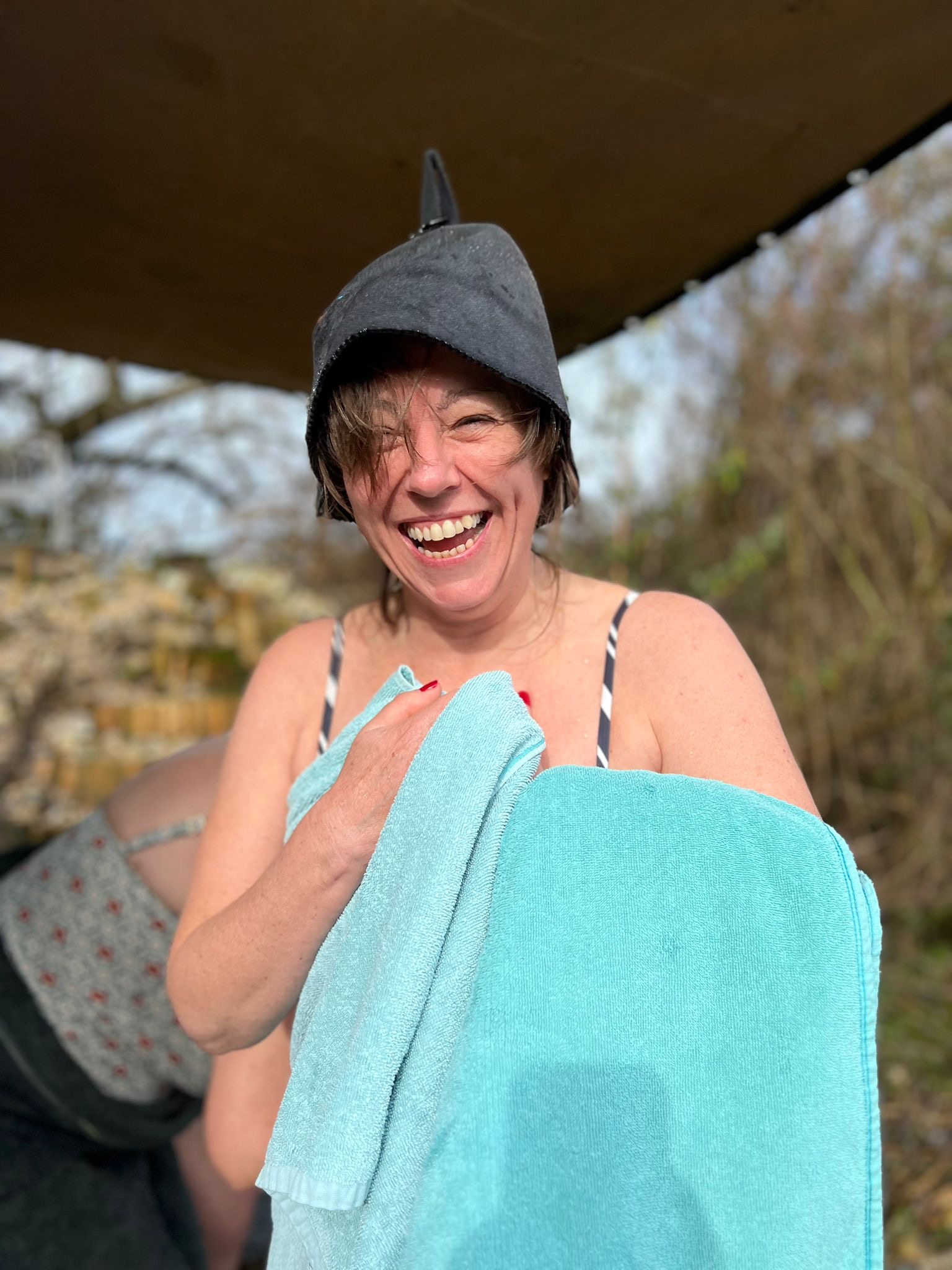
What better way to ease aches and pains, reduce stress and feel at one with nature, than a session in an outdoor sauna? According to the British Sauna Society, the number of Finnish-style saunas doubled between 2023 and 2024. These outdoor options are popping up in parks, on beaches, by lakes and rivers, housed in beach huts, horseboxes, sheds and shepherd’s huts. But working up a sweat like this is nothing new.
Sauna through the years
Every culture around the world has had its own sweat bath tradition, going back millennia, and there are Bronze Age remains of facilities in Britain. From Victorian times, before all homes had bathrooms, local authorities built municipal swimming pools and public baths (for washing, not swimming), which sometimes included saunas and steam baths. Most are no longer run by local authorities, and cater to a narrower slice of society. There’s often a discount for locals, though.
I love a sauna. In my late teens I used to take a long bus ride to enjoy a steam/sauna/hot shower/cold shower/cold plunge in Plumstead Baths in south east London. I’ve treated myself to a sauna at Porchester Spa in Bayswater, London’s oldest. And one freezing winter when I was working for the Telegraph in Canary Wharf, I regularly used the sauna in its gym at lunchtime to warm up.
I’ve sampled them in hotels and spas, but, more memorably, 10 years ago I tried a Finnish sauna inside the Arctic Circle. I laughed as I looked at the thermometer, realising that I’d experienced a temperature range of 110°C in one day: -30° to +80°! And being naked made a welcome change from being layered up. I learnt that ‘sauna’ is the only Finnish word used in English (and they pronounce it ‘sow-na’, rhyming with ‘wow’), but you could throw in löyly (‘lurl’: the steam produced when water is thrown on hot rocks).

First two photos: Fiona Ogden.
In February I tried one of the UK’s new outdoor saunas, Fallen Willow in Hampshire, voted Best New Sauna at the British Sauna Society Summit Awards 2024. There’s a shepherd’s hut for changing and a purpose-built wooden sauna building.
You can hear reeds and willow branches swishing in the wind, and birdsong, and feel a light breeze and weak sunlight on the skin. And looking out on the milky-blue lake through the sauna’s big window is infinitely preferable to the view of a wooden wall that you have in spa-based saunas.
It’s rare to be sitting close to other people in minimal clothing, and it’s bonding. We open up, in a similar way to what I’ve experienced at cold-water swimming. Talk ranges from relationship issues to getting married for un-romantic reasons, our mental health to previous sauna experiences – all punctuated by deep sighs of relaxation and a round of applause whenever any of us braves the 7°C lake.
Although I went with friends, the intimacy of the setting facilitates chatting with strangers. This relaxing of boundaries is documented in the 2023 film Smoke Sauna Sisterhood (rent via the BFI website) which follows a group of women in a smoke sauna in Estonia ‘washing off the shame trapped in their bodies and regaining their strength through a sense of communion’.
How to indulge
If you have high/low blood pressure or heart disease, you might want to check with your GP. The choice of whether to start/finish on cold or hot is up to you. And immersion in cold water in a lake, river, sea or tub is not compulsory. Stay in for no longer than 15 minutes at a time. Ask others before throwing water on the rocks. Drink a couple of glasses of water before and afterwards; you can lose a pint in sweat.
Some saunas offer guided rituals; others leave you to get on with it, after a few words of advice. Unlike in Finland, swimwear is standard, and take two towels, one to dry yourself and the other to sit on.
You may be given a conical felt hat to soak in cold water, then squeeze out. These are traditional, designed to regulate the temperature around your head, which prevents you overheating, even on the top bench. It also protects your hair (or scalp). Sauna hats have been hailed as the latest lifestyle status symbol, following on from the Dryrobe (which has spawned the hashtag #dryrobewankers and Facebook page for robes spotted anywhere but the beach).

Benefits of a sauna
The dry heat can reach 70 to 100°C, which makes blood vessels dilate, and raises heart rate, as when you exercise. This increased circulation can ease joint and muscle pain and stiffness, and makes you feel relaxed and less stressed; levels of cortisol, the stress hormone, can be reduced by 10 to 40%.
A long-term Finnish survey (of men) has also shown that regular sauna use (more than once a week) can reduce the risk of dying from cardiovascular disease or developing dementia or Alzheimer’s.
Find a sauna near you by clicking on ‘directory’ on the British Sauna Society website. Then sit back, relax and treat yourself to – and with – some heat.
Adrienne Wyper is a health and lifestyle writer and regular TNMA contributor.
Get kitted out:
That’s Not My Age is supported by its audience. When you purchase through links on our site, we may earn commission on some of the items you choose to buy.





